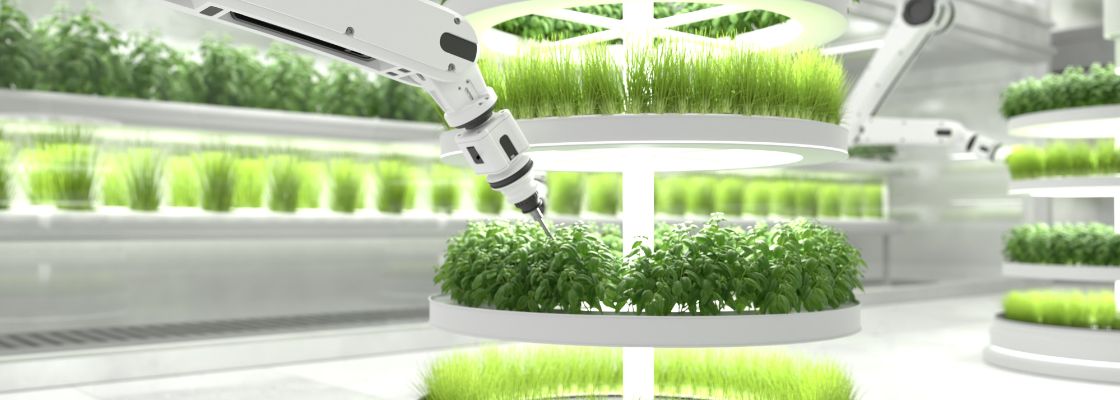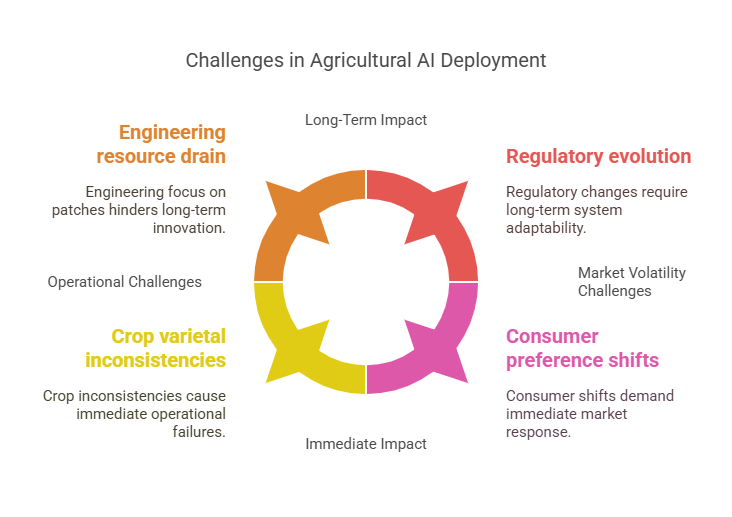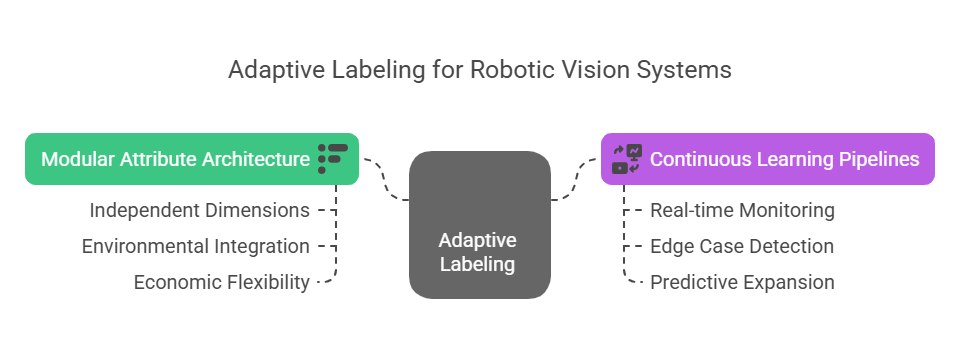Why Static Taxonomies Fail in Agri-Robotics — And How to Build Label Strategies That Evolve

Traditional farming represented a living inheritance, where each generation inherited not just land, but accumulated agricultural wisdom, with the responsibility to enhance and pass forward even more refined knowledge for their farms’ prosperity. Experienced farmers could walk through fields and instantly assess plant health, detect early pest damage, and determine optimal harvest timing. They developed remarkable adaptive recognition—adjusting their visual assessment criteria based on weather patterns, crop varieties, and changing market demands with an accuracy that took decades to develop.
But economics demanded evolution. Labor shortages intensified as rural populations migrated to cities, while farm sizes expanded dramatically under global competitive pressure. Climate change introduced unprecedented variability that challenged traditional farming wisdom, and consumer demands for sustainability added complexity that manual methods couldn’t address at scale. Today’s generation pursues the same goal of continuous improvement, but through AI and robotics rather than generational knowledge transfer. The agricultural industry’s answer was automation—GPS-guided tractors, sensor-driven irrigation, and satellite monitoring systems that promised data-driven precision.
The ultimate goal became agri-robotics: machines that could replicate human observational capabilities while delivering digital consistency and 24/7 scalability.
Yet this transformation revealed an unexpected challenge. While experienced farmers developed adaptive recognition through decades of hands-on experience, machine learning models require meticulously structured data annotation and taxonomy design to achieve similar intelligence. This fundamental mismatch between agricultural complexity and static classification systems has become the $43.4 billion agritech industry’s defining bottleneck.
The Static Taxonomy Trap: Why Industrial AI Fails in Agriculture
Most agritech companies apply industrial computer vision methodologies to agricultural challenges, creating fundamental mismatches. Industrial systems thrive on consistent lighting, standardized dimensions, and predictable parameters. Agriculture operates with diurnal light variations, genetic diversity, weather-dependent morphological changes, and evolving market standards.
When Blue River Technology deployed their See & Spray systems across diverse cotton fields, their California-optimized weed classification models struggled dramatically in Georgia’s humid climate and Texas clay soils. The issue wasn’t technical incompetence—it was assuming agricultural classification could operate with static, industrial-style categories.
The Industry Pain Points Crushing ROI
The transformation from traditional design methods to AI-powered workflows represents a fundamental shift in creative capabilities. Modern AI tools are not just speeding up existing processes—they’re enabling entirely new approaches to design iteration and experimentation.
This fundamental mismatch creates cascading operational challenges that threaten both immediate returns and long-term viability:
Deployment Disasters:
- Crop varietal inconsistencies: Disease detection algorithms optimized for heritage varieties miss symptoms in modern hybrid crops
- Environmental breakdowns: Weed detection systems trained on dark loam fail completely on sandy or clay backgrounds
- Phenological confusion: Growth stage detection calibrated for temperate climates produces false positives in subtropical regions
Scale-Up Nightmares:
- Manual intervention explosion: Override rates jump from 5% in pilots to 40-60% in commercial deployments
- Engineering resource drain: Development teams spend 70% of time on patches rather than innovation
- Customer satisfaction decline: Performance inconsistency across operations threatens contract renewals
Market Volatility Challenges:
- Regulatory evolution: Annual food safety updates require classification changes that static systems can’t accommodate
- Consumer preference shifts: Organic, specialty, and premium market demands create new categories existing systems can’t handle
- Climate adaptation needs: Changing pest patterns and weather extremes require classification updates that rigid frameworks resist
These challenges cost the industry billions annually in reduced efficiency, operational overhead, and customer churn, while more adaptive competitors capture market share.

Building Evolving Label Taxonomies for Agricultural AI: The Adaptive Solution
Progressive companies are abandoning rigid classification schemes for dynamic systems that embrace agricultural variability rather than fighting it. This requires fundamental architectural and organizational changes.
Core Principles for Adaptive Labeling for Robotic Vision Systems
Success requires building classification systems on principles that embrace rather than fight agricultural complexity:
Modular Attribute Architecture:
- Independent dimensions: Size, color, texture, and firmness as separate, combinable variables rather than fixed categories
- Environmental integration: Weather history, soil conditions, and microclimate data as metadata informing decisions
- Economic flexibility: Market grade requirements and premium qualifications as configurable parameters
Continuous Learning Pipelines:
- Real-time monitoring: Automated tracking of classification accuracy with immediate feedback loops
- Edge case detection: Systematic identification of classification challenges that become training opportunities
- Predictive expansion: Machine learning models anticipating required updates based on environmental and market trends

Implementation Strategy for Best Practices for Taxonomy Design in Precision Agriculture
Transforming static classification systems into adaptive frameworks requires a systematic, phased approach that minimizes risk while maximizing learning.
Phase 1: Foundation (3-6 months) Deploy minimum viable taxonomies covering 80% of use cases with built-in expansion capabilities. Establish baseline metrics across diverse conditions and implement automated data collection for edge cases.
Phase 2: Dynamic Expansion (6-12 months)
Implement automated taxonomy suggestion systems based on field performance. Deploy regional adaptation protocols and A/B testing frameworks for safe classification evolution.
Phase 3: Autonomous Evolution (Ongoing) Enable real-time updates without downtime. Implement self-improving algorithms and predictive capabilities that anticipate market and environmental changes.
Technical Excellence That Scales
Behind every successful adaptive taxonomy lies robust technical infrastructure designed to scale from individual farms to enterprise-wide deployments:
Agricultural-Optimized Architecture:
- Multi-modal integration: Combining visual, spectral, environmental, and historical data for robust decisions
- API-driven management: Enabling rapid updates without system downtime during critical operations
- Edge computing capabilities: Real-time performance in remote agricultural areas
- Farm system compatibility: Seamless integration with existing agricultural workflows
Quality Assurance Frameworks:
- Version control systems: Complete taxonomy evolution history with automated rollback capabilities
- Cross-validation protocols: Ensuring consistency across regions while allowing legitimate local adaptations
- Stakeholder integration: Combining agronomist expertise with engineering capabilities for optimal decisions
The Competitive Advantage: Why Adaptive Systems Win
Organizations implementing evolving label taxonomies for agricultural AI achieve transformative results that create sustainable competitive advantages:
Measurable Performance Gains:
- 35-50% improvement in cross-seasonal performance consistency
- 65% reduction in post-deployment engineering overhead
- 4x faster adaptation to new varieties and growing conditions
- 55% decrease in manual intervention requirements
Strategic Value Creation:
- Sustainable competitive moats through continuously improving performance
- Network effects where each deployment benefits all customers
- Customer loyalty through adaptive customization to local conditions
- Market expansion acceleration enabling rapid geographic diversification
Long-term Intelligence Assets:
- Proprietary agricultural algorithms that improve with real-world deployment
- Predictive capabilities for weather, market trends, and crop performance
- Customer-specific optimizations creating switching costs and barriers
- Cross-industry knowledge transfer enabling adjacent market expansion
The Strategic Imperative
The agricultural technology landscape is consolidating around companies that understand farming’s fundamental complexity. Static approaches create technical debt that compounds over time, while adaptive systems generate improving returns that strengthen competitive position.
For agritech decision makers, the choice is stark: evolve classification systems to embrace agricultural variability, or watch adaptive competitors capture market share while you struggle with obsolete solutions. The companies making this transition now will build sustainable advantages that compound with every deployment.
The future belongs to AI in agriculture systems that celebrate biological complexity rather than forcing it into industrial categories. Agricultural leaders who recognize this truth and implement annotation strategy for changing farm conditions will define the next generation of agricultural technology, while those resisting will be left behind by the inexorable advance of adaptive agricultural intelligence.
The transition from static to adaptive classification systems requires specialized expertise in both agricultural complexity and advanced annotation architecture. V2Solutions has been partnering with leading agritech companies to design and implement evolving taxonomy frameworks that embrace farming’s inherent variability. Our modular annotation systems and continuous learning pipelines ensure your AI models adapt to new varieties, changing conditions, and market demands—transforming agricultural complexity from a limitation into a competitive advantage. Don’t let rigid classifications hold back your agri-robotics potential. Connect with us to build annotation strategies that evolve as fast as your farming challenges.